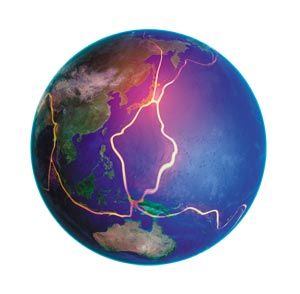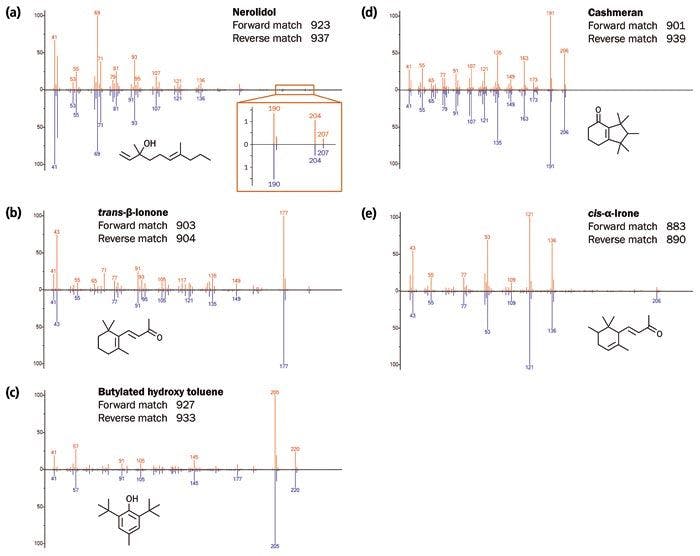LC–MS Analysis of Rock Cores
Microbial life is possible within the Earth’s mantle, according to new research. High performance liquid chromatography–mass spectrometry (HPLC–MS) analysis of rock cores sampled from the Iberian plate margin (off the coast of Spain and Portugal) revealed the presence of lipid biomarkers indicative of microbial communities present beneath the seafloor more than 100 million years ago.
Microbial life is possible within the Earth’s mantle, according to new research published in the journal Proceedings of the National Academy of Sciences.1 High performance liquid chromatography–mass spectrometry (HPLC–MS) analysis of rock cores sampled from the Iberian plate margin (off the coast of Spain and Portugal) revealed the presence of lipid biomarkers indicative of microbial communities present beneath the seafloor more than 100 million years ago.
(Photo Credit: ANDRZEJ WOJCICKI/SCIENCE PHOTO LIBRARY/Getty Images)

The outer surface of planet Earth is made of the crust that overlies the earth’s mantle. Around 125 million years ago, the super continent Pangaea broke up, forming a large rift that later became the Atlantic Ocean, pulling out rocks from within the Earth’s mantle and exposing them to seawater. This process created hydrothermal fluids that were warm and rich in hydrogen, methane, and other hydrocarbons. This is a process that has occurred throughout the history of Earth at plate boundaries, resulting in the “serpentinization” of mantle rocks that now make up a large proportion of oceanic plates. According to corresponding author, Frieder Klein from the Woods Hole Oceanographic Institution (WHOI), it is hypothesized that the processes beneath the Earth’s mantle could have supported microbial communities with the ingredients for metabolic reactions. Rock cores were extracted from the Iberian plate margin, located off the coast of Spain and Portugal, in 1993. The oldest sediment sampled was from over 690 m below the seafloor and was deposited during the Lower Cretaceous just before or during the split of North America and Europe into what is now the Atlantic Ocean. Klein told The Column: “We found minerals in drill cores from the Iberia margin off the coast of Portugal that contained the fossil remains of microorganims. Bacteria and archaea lived more than 100 million years ago beneath the seafloor in Earth’s mantle during breakup of the supercontinent Pangaea, just when the Atlantic Ocean was about to open. Similar systems exist today on the Mid-Atlantic Ridge.” As explained by Klein, the team found microfossils in brucite and calcite veins in rock samples by using Raman spectroscopy. To investigate further, the brucite–calcite veins were then extracted and analyzed using multiple-reaction monitoring (MRM) with HPLC triple quadrupole MS by co-author Florence Schubotz at the University of Bremen in Germany. According to the paper, a series of nonisoprenoidal dialkylglycerol diether (DEG) lipids of bacterial origin were detected. The profile of membrane lipids detected has only been found in two other seafloor environments (cold seep systems and the Lost City hydrothermal field) making contamination unlikely. The findings suggest that the activity of rocks from the mantle being exposed to seawater at plate boundaries is sufficient to sustain microbial life; however, further work is needed. Klein told The Column: “It is hypothesized that analogous systems existed on early Earth and were or are currently active on waterâbearing solar system objects like Saturn’s moon Enceladus or Jupiter’s moon Europa. In the future we will try to learn more about these microorganisms and try to get a better understanding of the environments they live in.” - B.D. Reference
- F. Klein et al., PNAS DOI: 10.1073/ pnas.1504674112 (2015).

Determining the Effects of ‘Quantitative Marinating’ on Crayfish Meat with HS-GC-IMS
April 30th 2025A novel method called quantitative marinating (QM) was developed to reduce industrial waste during the processing of crayfish meat, with the taste, flavor, and aroma of crayfish meat processed by various techniques investigated. Headspace-gas chromatography-ion mobility spectrometry (HS-GC-IMS) was used to determine volatile compounds of meat examined.

.png&w=3840&q=75)

.png&w=3840&q=75)



.png&w=3840&q=75)



.png&w=3840&q=75)










